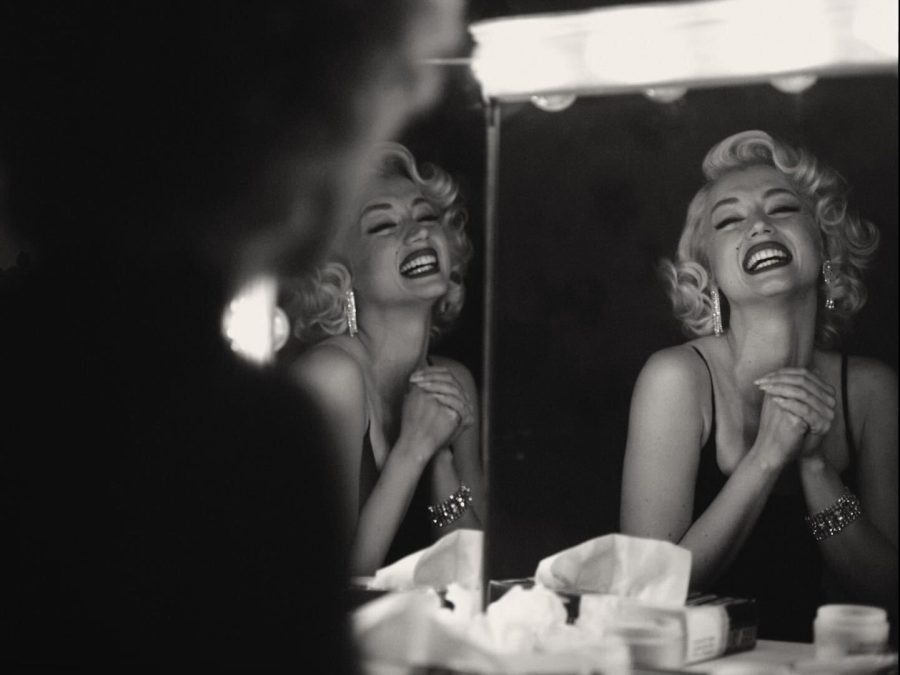Netflix’s “Blonde” lacks direction, empathy
September 28, 2022
Content Warning: “Blonde” is rated NC-17 and showcases scenes of sexual assault.
“Blonde,” based on a fictional book of the same name by Joyce Carol Oates, explores the story of the late Marilyn Monroe and the exploitation she faced within the corrupt system of 20th-century Hollywood.
The story of “Blonde” sets its sights on exploring the monetary and sexual exploitation of Monroe, but instead ends up exploiting her story just as Hollywood once did. Upon digging deeper into the context surrounding the movie, audiences can find that while “Blonde” does reference actual elements of Monroe’s life, it also leans on rumors and speculation from Oates’ book and popular culture at large.
To more effectively carry out the fictional elements of the story, the movie should have either been more clear in showcasing its fictional premise or just made a genuine, factual biopic about Monroe’s life — not try to balance both. While the teams behind biopics like “Rocketman” were able to incorporate input from their subjects, the creators of “Blonde” could not, further compounding the ethical dilemma presented with the movie. Numerous sexual assault scenes feel like the writers lacked any amount of empathy for Monroe’s personal story and trauma. Due to an inability to secure input from the late Monroe, the movie’s willingness to display traumatic events from her life leaves a bad taste in audiences’ mouths since it talks about exploitation while exploiting the life of the late Monroe.
The movie’s NC-17 rating becomes clear when audiences see the excess of nudity in the project. While in some cases nudity fits the movie’s theme of exploitation, other times, nude scenes feel unnecessary. Additionally, sex scenes in “Blonde,” while used sparingly, take up too much time and could be mostly removed.
Cinematographer Chayse Irvin takes audiences through a psychedelic daydream throughout the film’s nearly three-hour runtime. Irvin utilizes visual motifs like the flashing of cameras and large theater audience reactions to explore the emotional journey of this movie’s version of Monroe. The cinematography helps harmoniously strengthen the work of director Andrew Dominik (“Chopper”). However, scene-to-scene transitions feel disjointed across the board — an issue indicating poor writing and lackluster development of the structure of “Blonde.”
Ana de Armas (“Knives Out,” “Blade Runner 2049”) gives a heart-wrenching performance that showcases both the glamourous, enigmatic side of Monroe and the more personal, intimate life of Norma Jeane. Armas switches between emotions with the fluidity and suddenness of a camera flash, engaging audiences with a compelling arc of the effects of film industry exploitation. She even cries seemingly on demand. Armas clearly puts her all into this role, shining as a strong element in this overall unsettling story.
Unfortunately, gorgeous cinematography and an excellent performance from Ana de Armas do not make up for the vile taste left in viewers’ mouths by the movie’s disjointed structure, apathy and excessive runtime. Unfortunately, Netflix’s first ever NC-17 Netflix movie may be its last.
2 ½ camera flashes out of 5
For more information on how to see “Blonde” visit www.netflix.com/Blonde.



